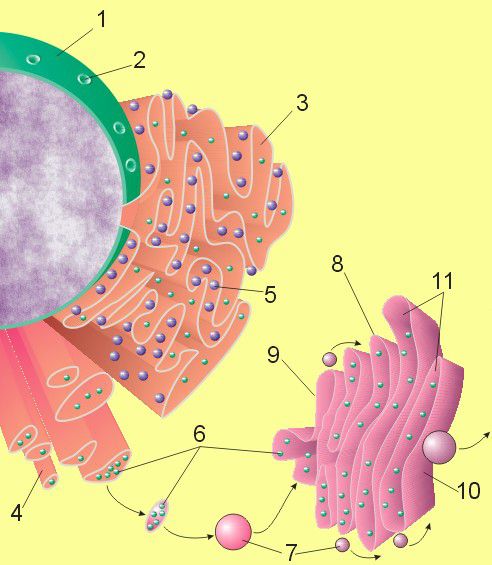-
 Crenellation
Crenellation
-
 Adiabatic
Adiabatic
-
 Intensity
Intensity
-
 Electrode
Electrode
-
 Large Synoptic Survey Telescope
Large Synoptic Survey Telescope
-
 Ichneumonidae
Ichneumonidae
-
 Polynomial
Polynomial
-
 Acidic rock
Acidic rock
-
 Dimorphism
Dimorphism
-
 Cheiropompholyx
Cheiropompholyx
-
 Corot
Corot
-
 Circuit breaker
Circuit breaker
-
 Morphing
Morphing
-
 Exocytosis
Exocytosis
-
 Windows Vista
Windows Vista
-
 Thermal bridge
Thermal bridge
-
 Catabolic agent
Catabolic agent
-
 Plasmodesma
Plasmodesma
-
 Apathy
Apathy
-
 Emihedrism
Emihedrism
-
 Exophthalmus
Exophthalmus
-
 Java
Java
-
 DVB-H
DVB-H
-
 Caprimulgiformes
Caprimulgiformes
-
 Wingless
Wingless
-
 Spitzer
Spitzer
-
 Ambulacra
Ambulacra
-
 Dunite
Dunite
-
 Neoteny
Neoteny
-
 Moraine
Moraine
Endoplasmic reticulum
The endoplasmic reticulum is a eukaryotic cellular organelle.
Structure of the endoplasmic reticulum
The endoplasmic reticulum is a network of membrane tubules (often interconnected) arranged through the cytoplasm of eukaryotic cells. Its membrane alone makes up more than half of the cell membrane system, and is in contact with the nuclear envelope.
The endoplasmic reticulum may be:
Role of the endoplasmic reticulum
The granular endoplasmic reticulum is firstly the site of synthesis (in its associated ribosomes) of proteins secreted outside of the cell and secondly of proteins and lipids forming the cellular organelle membranes (Golgi apparatus, lysosomes, mitochondria, nucleus, ribosomes, vesicles, etc.). It contributes to the correct foldings of the proteins that have just been synthesised.
The smooth endoplasmic reticulum takes part in cellular metabolism by synthesising lipids and storing calcium.
 The endoplasmic reticulum is a eukaryotic organelle located in the cytoplasm. 1: nucleus; 2: nuclear pore; 3: rough endoplasmic reticulum (RER) ; 4: smooth endoplasmic reticulum (SER) ; 5: ribosome on the RER; 6: transport proteins; 7: transport vesicle; 8 : Golgi apparatus; 9 : cis face of the Golgi apparatus; 10: trans face of the Golgi apparatus ; 11: Golgi apparatus saccule. © Magnus Manske, Wikimedia, public domain
The endoplasmic reticulum is a eukaryotic organelle located in the cytoplasm. 1: nucleus; 2: nuclear pore; 3: rough endoplasmic reticulum (RER) ; 4: smooth endoplasmic reticulum (SER) ; 5: ribosome on the RER; 6: transport proteins; 7: transport vesicle; 8 : Golgi apparatus; 9 : cis face of the Golgi apparatus; 10: trans face of the Golgi apparatus ; 11: Golgi apparatus saccule. © Magnus Manske, Wikimedia, public domain
Latest
Fill out my online form.



